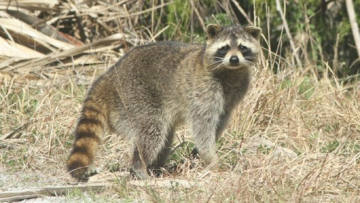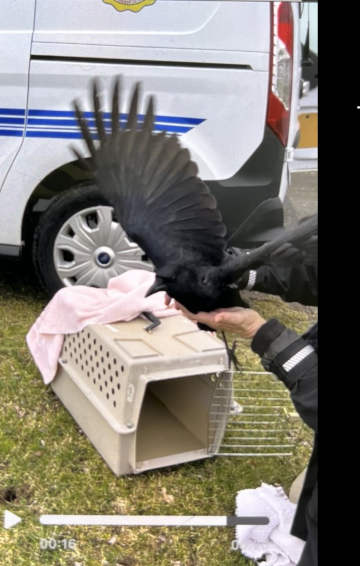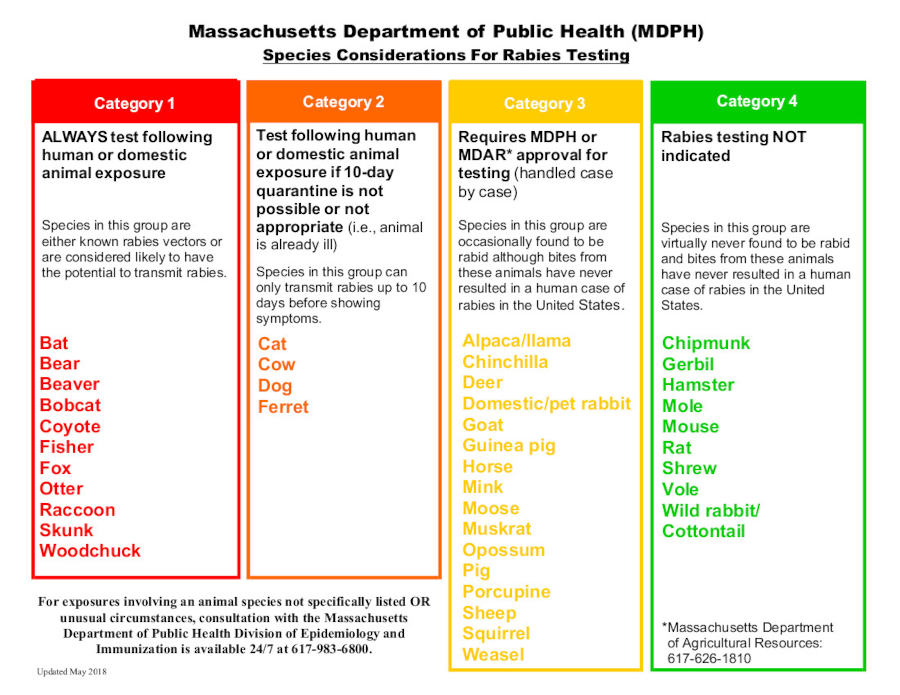Nature Notes

PHOTO COURTESY OF GARRY KESSLER
Calls to Animal Control vary with the season, but in mid-spring to early summer, many involve a raccoon or coyote.
August 16, 2025
NATURE NOTES
By Annie Reid
Westborough Community Land Trust
Wildlife Advice from an Animal Control Officer
Who better to tell us about local wildlife than a town animal control officer? Melinda MacKendrick, an animal control officer for 30-plus years and still counting, shared her perspective and practical advice at a recent Westborough Community Land Trust (WCLT) meeting. She currently serves in Westborough and Grafton and has also served in Northborough.
Noting that we share our local natural environment with more wild animals than most people realize, Officer MacKendrick offered reassuring words about these wild neighbors. Overall, call types to Animal Control vary by season. A little less than half are typically about wildlife. Currently, the majority of her wildlife calls are about raccoons (Procyn lotor) and coyotes (Canis latrans var). This will change as the seasons change. The calls usually come from people who worry when they’ve spotted a raccoon or coyote during the day, or have found a baby raccoon.
“Raccoons are NOT strictly nocturnal. It’s normal for them to be out during the day. It does NOT mean they are sick,” Melinda said. She explained that raccoons sleep up to 8 times in 24 hours, for a few hours at a time. In spring, they’re often out in the day, searching for food for their young. In summer-fall, young raccoons venture out and leave their family. “You don’t need to be concerned just because raccoons are living or nesting on your property.”
Melinda also hears from people concerned that a coyote seemed to be following them during a walk in the woods. “That coyote is probably just putting itself between you and its den or cubs. From the coyote’s point of view, it is escorting you away from its territory.” Melinda emphasized that “healthy coyotes DON’T eat children at the bus stop.” Also, if you hear coyotes howling, don’t worry, they’re just communicating with one another. They’re not necessarily announcing a kill, as lore would suggest.
People sometimes call about large 2-inch wasps flying around and making individual holes in sandy ground. “These are not murder hornets,” Melinda says. Rather, they’re cicada-killer wasps (Sphecius speciosus). They’re hunting another insect – cicadas. These wasps are unlikely to sting, but they will sting if provoked, “and it’s a nasty sting.”

Animal Control Officer MacKendrick is shown releasing a crow BACK to where it came from, after it had been injured from becoming entangled in discarded fishing line. Tufts Wildlife Clinic brought it back to health, and it recovered enough to be returned to the wild where it came from.
What about bears? Based on reports from various parts of Westborough, Melinda estimates that the town probably has three, or at times, maybe even six black bears (Ursus americanus), depending on the time of year (think mates, cubs, bears passing through). One was spotted on a ring camera in Grafton near the town line. A bear has also been photographed in a Northborough backyard.
“Most of the time, black bears are timid, docile creatures. They don’t want much to do with people,” Melinda said. “If you come upon one, just back away slowly. A bear would likely be more concerned about your dog than about you. Keep your leashed dog close.” Don’t run or climb a tree, as bears can run 35 mph. They also climb trees. Be aware that bears can be attracted to your property by birdfeeders, pet food outside, unsecured garbage, and compost piles. Clean up accordingly.
People who find a baby animal – such as a baby squirrel or raccoon, young bird, or deer fawn – often think it has been abandoned. Most likely, Melinda says, the mother is nearby or soon to return. The best thing to do is simply to leave the young animal alone, untouched, where you found it. Don’t try to move it or bring it home. Tufts Wildlife Clinic in Grafton does not accept orphaned wildlife. Rather, it’s a resource for injured animals, which can sometimes recover well enough to be returned to the wild where they were found.
Baby opossums (Didelphis virginiana) are an exception to the leave-it-alone rule, Melinda explained. “Baby opossums found alone need to go to a wildlife rehabilitator. The best thing to do is keep them warm and get them to a licensed rehabilitator. They are old enough to be on their own when about 7 inches long not including the tail – the size of 10-12-week-old kitten.” Wildlife rehabilitators from Ferncroft Wildlife Rescue recently presented a program about opossums at the Westborough Senior Center.
White-tailed deer (Odocoileus virginianus) typically hide their fawns in a field or among dry leaves in a forest before going off to forage for food, but Melinda had a call about an unusual situation around 2016-2017. A fawn was found in a parking lot, under a parked car. The car’s owner needed to leave, so Melinda retrieved the fawn from its unsafe hiding place. She moved it a short distance, to the far side of a guard rail around the parking lot, in hopes that the mother was near. And sure enough, a sound came from the edge of the woods, and there was the mother. The fawn took off in a flash, and the two of them disappeared into the woods. Happy ending!
What about turtles crossing a road, typically in spring? Many turtles – painted turtles (Chrysemys picta), snapping turtles (Chelydra serpentina), and even rare spotted turtles (Clemmys guttata) – are killed in traffic. If it is safe to do so, Melinda’s advice is to let, or help, the turtle go in the direction it is heading. Don’t move it back where it was coming from, because it will only try to cross again. In spring, males are looking for mates, and females search for warm, moist places to dig holes for laying their eggs.
What’s the best way to keep wild animals out of your yard? Her advice is to avoid attracting them in the first place. Don’t provide food, either inadvertently or deliberately. As with bears, many wild animals are tempted by birdseed, pet food, unsecured garbage, and compost piles.
In the case of wild turkeys (Meleagris gallopavo), she warns: “If you feed them, they will come!” If you don’t want skunks (Mephitis mephitis) digging in your lawn for grubs, get rid of the grubs. Consider fencing to keep rabbits (Sylvilagus floridanus) out of your vegetable garden. “If you don’t want bees in your yard (say, someone has an allergy), plant flowers that bees may not like, such as feverfew (Tanacetum parthenium).”
One thing NOT do is to poison pest animals (mice, rabbits, etc.) with second-generation anti-coagulant pesticides (SGARs). When creatures eat these pesticides and die, they often become food for other animals, which then are also poisoned. Think of family cats and dogs, predators such as hawks, owls, eagles, and foxes, or scavengers such as skunks, raccoons, opossums. SGARs remain in the body tissue of dead animals for up to four weeks, and basically move up the food chain when other animals feed. In Massachusetts, 26 towns, including neighboring Grafton, have banned second-generation anti-coagulant pesticides (SGARs).
Westborough and surrounding towns contain numerous ponds and swamps, so people sometimes call Animal Control about beavers (Castor canadensis) or muskrats (Ondatra zibethicus) spotted in wetlands or on roads. Which is which? Beavers are large (55-80 lbs, 2-3 ft long) with a flat, 10-inch, paddle-shaped tail. Muskrats are much smaller (2-4 lbs, 1 ft long) with a long, triangular, rat-like tail. Beaver dams can cause troublesome flooding, but the Town only takes action if Town property is damaged. Melinda reports that river otters (Lontra canadensis) are occasionally seen in local waters, usually just passing through.
Do we have mountain lions and moose? A mountain lion (Puma concolor) has occasionally wandered through western Massachusetts, but Melinda notes that mountain lion sightings are generally cases of mistaken identity involving a coyote or bobcat (Lynx rufus). Both animals are much smaller than mountain lions.
Moose (Alces alces) show up very rarely in Westborough. In 2016 a young moose was killed at night on Route 9. Melinda describes a moose as “a half-ton barrel on stilts” and cautions, “Don’t speed at night.” The body of a hit moose can slam right through a car windshield.
Finally, is rabies a problem locally? In this country, Melinda reported, this dangerous disease rarely affects humans, thanks to widespread vaccinations required for dogs, cats, ferrets, and other pets, but outside the US, 59,000-70,000 people die of rabies each year. Many common wild animals in Massachusetts can transmit rabies, especially raccoons, skunks, and bats. (See chart of four groups of animals with different likelihoods of carrying rabies). In the 1990s, a rabies epidemic among raccoons wiped out much of the Massachusetts raccoon population (which led to increases in local populations of muskrats and fishers, Pekania pennanti).
Melinda recalls that in 2024, rabies was found in a skunk and a bat near the center of Westborough. What should you do if you are exposed to rabies (by a bite or scratch from a wild animal), and you don’t have the animal (for testing)? Melinda says to call a doctor right away to get a vaccine (before onset of symptoms).
Asked about her background, Melinda says, “I’ve loved animals my entire life. Growing up, I had animals – cats, dogs, baby birds, a squirrel.” Her professional background includes Animal Control Officer Certification Academy training and yearly updates. She is also Westborough’s Animal Inspector. Read her annual reports in Westborough’s Annual Town Report, prepared each March for Town Meeting.
For more, watch Westborough TV’s video of Melinda’s talk.

This chart from Massachusetts Department of Public Health (MDPH) shows four groups of animals with differing likelihoods of carrying rabies.